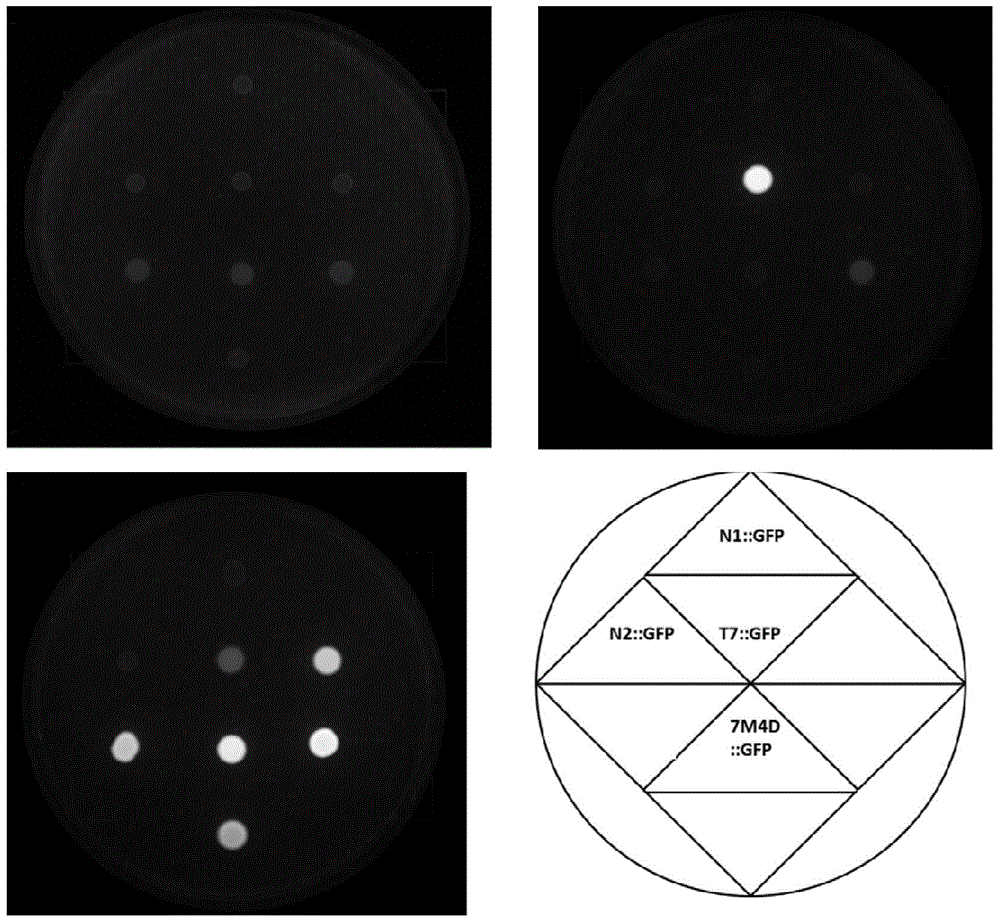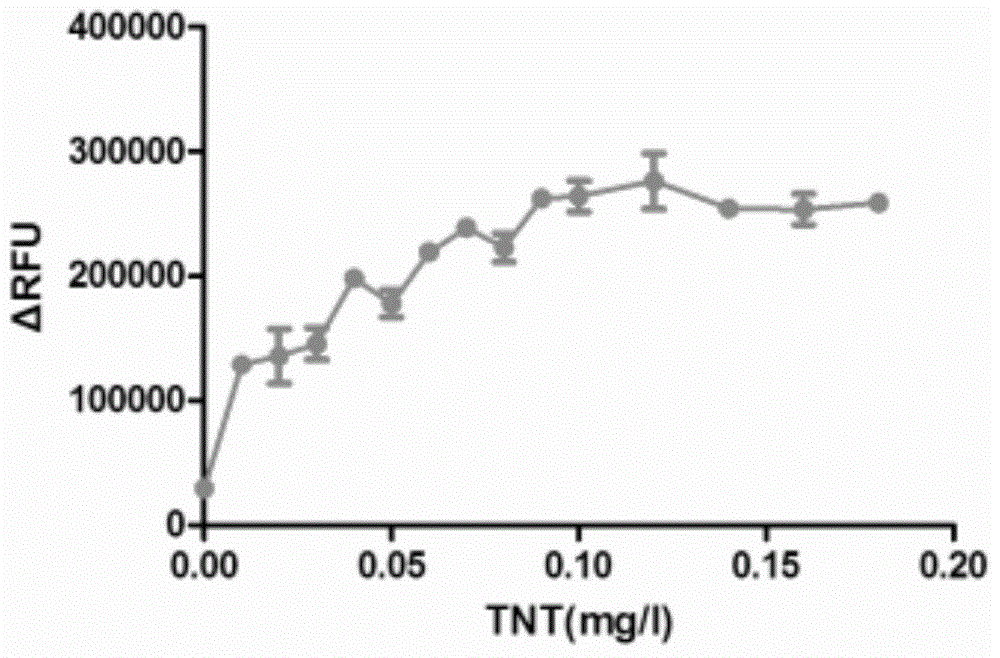Promoter7M4D and application thereof
A DNA molecule and sequence technology, applied in recombinant DNA technology, DNA/RNA fragments, introduction of foreign genetic material using vectors, etc. It can solve the problems of TNT poisoning and high cost, and achieve the effect of good specificity and sensitivity and good component storage.
- Summary
- Abstract
- Description
- Claims
- Application Information
AI Technical Summary
Problems solved by technology
Method used
Image
Examples
Embodiment 1
[0023] Example 1. Discovery of promoter sequences
[0024] 1. Extract the chromosomal genome of Escherichia coli K-12MG1655.
[0025] 2. Using the chromosomal genome obtained in step 1 as a template, the NEB Q5MIX high-fidelity PCR system was used to amplify the promoter element.
[0026] 3. All the amplified products obtained in step 2 are respectively added with dATP through Taq enzyme polymerization reaction to form polyA, and then connected into the vector pMD18-T through DNA ligation operation to obtain a recombinant plasmid.
[0027] 4. The recombinant plasmid obtained in step 3 was double digested with restriction endonucleases Xba I and Bgl II, and a small fragment was recovered.
[0028] 5. The pET24-GFP vector was digested with restriction enzymes Xba I and Bgl II, and the vector backbone was recovered.
[0029] 6. Connect the small fragment obtained in step 4 with the vector backbone obtained in step 5 to obtain a recombinant plasmid.
[0030] 7. The recombinant pl...
Embodiment 2
[0036] Example 2, the acquisition of recombinant bacteria and control bacteria
[0037] First, the acquisition of recombinant bacteria
[0038] 1. Synthesize the double-stranded DNA molecule shown in Sequence 1 of the Sequence Listing.
[0039] 2. Double-digest the double-stranded DNA molecule obtained in step 1 with restriction endonucleases Bgl II and Xba I, and recover the digested product.
[0040] 3. The pET24-GFP vector was digested with restriction enzymes Bgl II and Xba I, and the vector backbone of about 6000 bp was recovered.
[0041] 4. Connect the enzyme-digested product of step 2 and the vector backbone of step 3 to obtain a recombinant plasmid.
[0042] 5. The recombinant plasmid obtained in step 4 was introduced into Escherichia coli BL21 (DE3) to obtain a recombinant bacteria.
[0043] Second, the acquisition of control bacteria
[0044] 1. Insert the T7 promoter (double-stranded DNA molecule shown in Sequence 3 of the Sequence Listing) between the Bgl II a...
Embodiment 3
[0056] Example 3. Functional verification of promoter
[0057] The treatment method of the recombinant bacteria TNT group: the recombinant bacteria obtained in the step 1 of Example 2 are inoculated into LB liquid culture medium, cultivated to OD 600nm When = 0.6, TNT was added and the concentration was 15 mg / L, then 30 ° C, 200 rpm shaking culture for 12 h, and then 200 μl of bacterial liquid was transferred to a 96-well polystyrene detection plate (Bio-rad), and detected on a Pekin Elmer 2300 Multilabable Reader ( GFP detection conditions are excitation / emission, 485 / 535nm).
[0058] The treatment method of the recombinant bacteria control group: inoculate the recombinant bacteria obtained in step 1 of Example 2 into LB liquid medium, and cultivate to OD 600nm = 0.6, then 30 ℃, 200rpm shaking culture for 12h, then pipette 200μl of bacterial liquid to 96-well polystyrene detection plate (Bio-rad), and detect it on Pekin Elmer 2300Multilabable Reader (GFP detection conditions...
PUM
 Login to View More
Login to View More Abstract
Description
Claims
Application Information
 Login to View More
Login to View More - R&D
- Intellectual Property
- Life Sciences
- Materials
- Tech Scout
- Unparalleled Data Quality
- Higher Quality Content
- 60% Fewer Hallucinations
Browse by: Latest US Patents, China's latest patents, Technical Efficacy Thesaurus, Application Domain, Technology Topic, Popular Technical Reports.
© 2025 PatSnap. All rights reserved.Legal|Privacy policy|Modern Slavery Act Transparency Statement|Sitemap|About US| Contact US: help@patsnap.com



